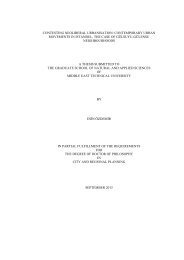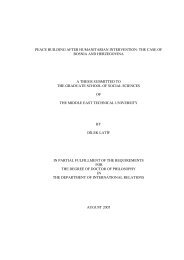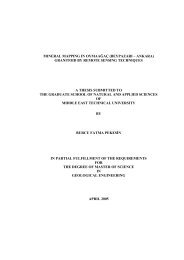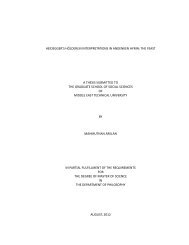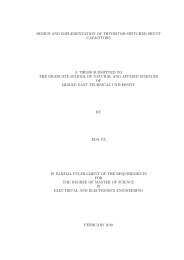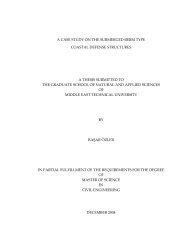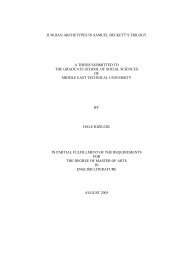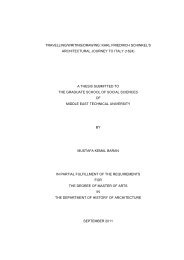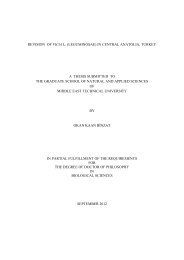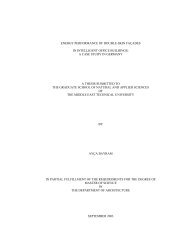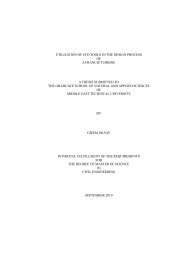View Original - Middle East Technical University
View Original - Middle East Technical University
View Original - Middle East Technical University
Create successful ePaper yourself
Turn your PDF publications into a flip-book with our unique Google optimized e-Paper software.
analysts espouse a cyclical fall in the rate of profit(industrial cycles or cyclical crisis)<br />
and others do so a more secular fall(for the whole capitalist system or systemic crisis).<br />
Marxist economic theory should have another time segment, argues Mandel, that of<br />
the long-wave; otherwise pedantic consequence of which would be an ‘ostrichlike<br />
denial of reality’(1995:7-9). A rethinking of Marxist analytical categories, that does<br />
not extenuate the cyclical downturns or the inescapability of systemic crisis but<br />
nevertheless is evocative of long-waves within the capitalist economy, is practical<br />
only with the proviso that basic variables of Marxist theory are ‘partially autonomous<br />
variables’(ibidem).<br />
These basic variables are the determinants of the regular patterns and contradictions of<br />
capitalism, of which the rate of profit is both the ‘seismograph’ and ultimately the<br />
consequence of these variables of capital valorisation along their changing format<br />
over time. In the Marxist understanding of rate of profit, organic composition of<br />
capital(dead to living, socially necessary labour ratio) and the rate of exploitation or<br />
the rate of surplus value(surplus labour to socially necessary labour ratio) are the two<br />
sides of the profit rate. Increases in organic composition of capital have a profit rate-<br />
lowering effect; increases in the rate of surplus value however have a profit rate-<br />
increasing effect. In fact, the theory of the falling-rate-of-profit is technically about<br />
the thorough machining of the productive system. As such, organic composition of<br />
capital over time increases as rate of surplus value declines, each does so because of<br />
the ever thinning of extant living labour on the shopfloor. Rate of profit would still<br />
decline, even though rate of exploitation does not or even soars, whenever the increase<br />
in the constant capital is more excessive than the increase in surplus value. This is<br />
because, the automatic increase in the throughput-labour ratio on the basis of the<br />
increasing organic composition of capital cannot be in excess of the throughput-<br />
capital ratio that the very increasing organic composition of capital simultaneously<br />
affords. In these terms, with a steady level of real wage, ever-increasing labour<br />
productivity cannot in the long run withstand the adverse effects of a concomitant<br />
increase in the value composition of capital.<br />
32



